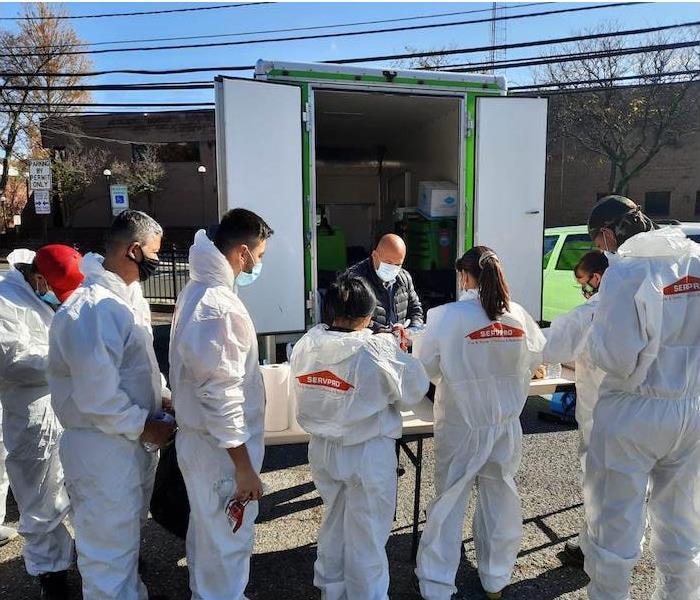Dehumidification for Teaneck Properties Affected by Mold Damage
3/30/2023 (Permalink)
 Sometimes mold is not visible to the eye but you can smell the musty odor. Contact our team in Teaneck to investigate the situation and find the mold.
Sometimes mold is not visible to the eye but you can smell the musty odor. Contact our team in Teaneck to investigate the situation and find the mold.
How SERVPRO Dehumidifies Teaneck Homes during Mold Remediation
Mold primarily develops because there is moisture in abundance around organic materials. A combination of other factors, including minimal natural light and favorable temperature, worsen the proliferation and mold damage levels. A dehumidifier helps limit the level of moisture in the air and thus can be used as one of the steps to control mold in your Teaneck home.
Dehumidification is a potent tool, but it is rarely used alone when Teaneck properties have mold damage, primarily because it cannot remove the colonies already developing on surfaces. Dehumidification is also likely to control moisture in a building only temporarily. SERVPRO has certified Antimicrobial Remediation Technicians who perform dehumidification correctly and combine it with other remediation procedures to contain microbial growth.
Actions necessary when dehumidifying moldy areas:
- Managing the airflow levels
- Drying affected materials thoroughly
- Timely action
Dehumidifiers draw in humid air, cool it down, leading to condensation, which extracts the water vapor it holds. The drier air is exhausted back into the room. Therefore, even when no separate air movers are used, the dehumidifiers influence airflow, spreading moldy residues around the property. Our SERVPRO teams use dehumidifiers with low airflow to limit the disturbance levels.
Dehumidification works against mold by making external conditions less favorable to the colonies. Therefore ensuring the dehumidification process minimizes moisture to the lowest levels is essential. We can dry materials sufficiently when our technicians use specialized dehumidifiers like Low Grain Refrigerants (LGR) or Desiccant units. We also use units with a higher Pints per Day, PPD, rating for faster completion of the restoration.
Other Solutions to Combine with Dehumidification
As dehumidification lowers humidity inside your home, other processes can help manage different aspects of mold contamination. Running an air filtration device is one such intervention. It helps remove spores and moldy debris from the air, limiting new growth chances since the particulate matter extracted from the air cannot settle on surfaces. The best air filtration devices are layered with filters, including HEPA filters which capture up to 99.97% of particles in the air.
Applying chemicals to moldy surfaces is also essential in killing spores or inhibiting microbial growth processes. Our IICRC Certified SERVPRO technicians use the chemical agents after thoroughly cleaning the areas. Ensuring direct contact with surfaces is also essential to guarantee effectiveness.
Chemicals that help in mold remediation:
- Biocides
- Sporicides
- Fungistats
Dehumidification is only effective if it reaches all the affected areas in your house. Physical barriers that limit air movement, such as wall panels, can hamper the effectiveness of dehumidifiers. Our SERVPRO technicians resolve this through engineering controls. We can demolish some areas to open them up for uninhibited airflow. We can also set up containment barriers to limit air movements within a targeted section of your property.
Demolition is also necessary to remove heavily contaminated porous materials since they might be structurally compromised. The deeply embedded hyphae are challenging to clean. Our experienced crews use a controlled approach when cutting or breaking down materials to limit the spread of moldy residues in the air. Controlled demolition requires using precision cutting tools and evaluating the affected areas to establish mold spread patterns and the location of vital installations such as air ducts and power cables. That way, only the necessary materials are removed.
SERVPRO of Teaneck / Englewood performs simple procedures like dehumidification or complex remediation to combat mold damage in your property "Like it never even happened." Call us at (201) 266-0482.






 24/7 Emergency Service
24/7 Emergency Service